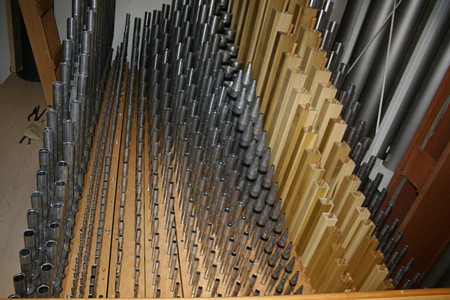 |
The
term "Positiv" originally referred to a smaller, free-standing one
manual organ. Later the "Positiv Organ" was incorporated into the main
case but still had its own manual and sometimes also had a separate
wind chest.
On this organ the Positiv Division sits on the right side of the organ
next to the Swell
Division about eight feet off the ground. This angle gives a decent
view of all the ranks in the Division. From left to right, the ranks
are 8' Krummhorn, 1' Zimbel III, 1 1/3' Quintflote, 1 3/5' Terz, 2'
Blockflote, 2 2/3 Nasat, 4' Koppelflote (pipes with the conical pointy
tops), 8' Holzgedackt (wood pipes), and 4' Praestant. |
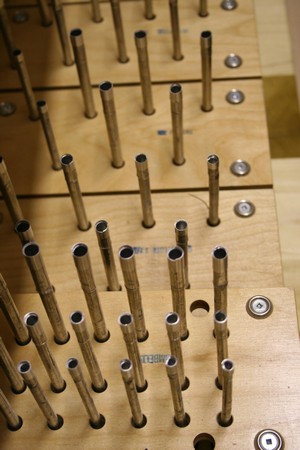 |
Here's a
close up view of some of the smaller pipes in the Positiv Division. If
you look at the full size version of the photo at left, take a close
look at the three rows of pipes in front. You should be able to see "Z"
for Zimbel, and "POS" for Positiv Division. The pitch of the pipe is
also visible on a few pipes. |
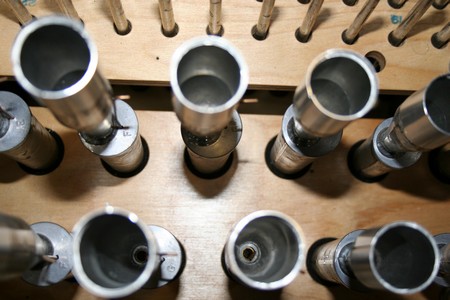 |
Here's
another close of view of some pipes. These are from the 8' Krummhorn
rank. Again a view of the full sized photo will reveal such details as
the pitches on the pipes and other structural details of the pipes
themselves. |
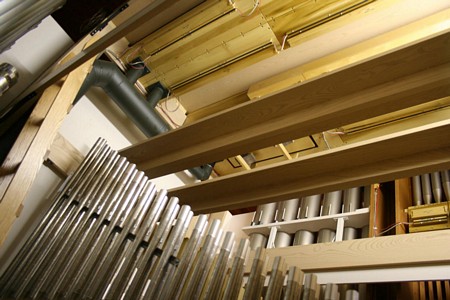 |
Above the
pipes in the Positiv Division (seen at bottom) is another level of
pipes made up of ranks from the Great and Pedal Divisions. In the
background are pipes from the Great Division visible in the facade. |
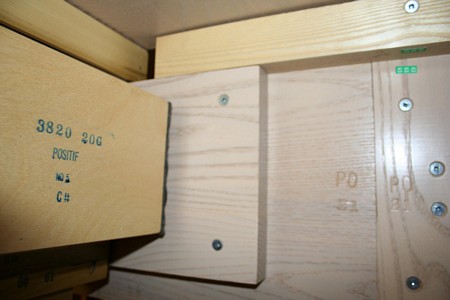 |
Organ builders stamp information on the
different pieces of the case for ease of assembly at the final
location. An organ is usually built at the builder's factory, then
disassembled and reassembled at the final location. The lettering on
the right is likely for identifying pieces of the case which go
together. On the left is information about one of the ranks of pipes in
the Positiv Division. |